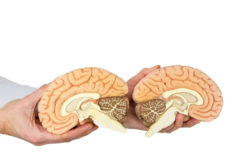Top Class Actions’s website and social media posts use affiliate links. If you make a purchase using such links, we may receive a commission, but it will not result in any additional charges to you. Please review our Affiliate Link Disclosure for more information.

What Is the Cerebellum?
The cerebellum is an area of the brain that consists of two bilateral lobes but is considered separate from its main body by location. As indicated by Wikipedia, it is placed posterior “to the brain” and above the brain stem. It resides just below the occipital lobe responsible for the interpretation of visual stimuli.
What Are The Main Functions Of The Cerebellum?
The aforementioned symptoms of cerebellar atrophy—a deterioration of nerve cells in this area of the brain—give us a clue about its function when it is performing well. The strange walk, uncoordinated arm and leg movements, and tremor tell us that the regulation and balance of motor activities is one of the lobe’s most critical jobs.
How Is Cerebellar Atrophy Diagnosed?
First, the patient is typically observed demonstrating the signs and symptoms of cerebellar atrophy. Perhaps they have revealed the tendency to fall over when upright or ambulating. Maybe they have exhibited the wide-based uneasy stagger coupled with movement of the body’s trunk that resembles quivering. A disturbing slowness in finding the words and ability to articulate thoughts might also be noted.
Symptoms of cerebellar wasting might also include trouble swallowing liquids or foods, and several visual complications. These complications could be experienced as double vision, or difficulty moving the eye to take in visual stimuli because of paralysis of extra-ocular muscles. Nystagmus—jerky movements of the eyes that are repetitive and beyond the control of the patient—are also commonly observed signs in sufferers of cerebellar atrophy.
Once these signs and symptoms have been observed, rooting out the cause becomes the next step. Unfortunately, this can be quite involved in that there are both genetic and acquired reasons why this atrophy might develop. The first step would be to rule out genetic elements with a DNA test. Secondly, acquired atrophy might be fully confirmed using imaging tests such as a CAT scan or MRI.
What Are Some Of The Causes For Cerebellar Atrophy?
According to the Mayo Clinic, cerebellar atrophy or ataxia can come as a result of head trauma occurring later in life or even from cerebral palsy, a brain-based birth injury. Additionally, a stroke or structural change in the brain such as the development of a tumor can bring it on. Systemic infections can play a big part in the condition as well as certain autoimmune diseases such as multiple sclerosis or celiac disease. Nutritional deficiencies in Vitamins E, B12, or thiamine which is common in alcoholism have been known to contribute to ataxia as well.
Can Medications Cause Cerebellar Atrophy?
Toxic reactions to certain medications have been linked in some situations to cerebellar atrophy. One of those reactions is to a “grandfather” seizure medication known as Dilantin. Since seizure disorders are also associated with smaller than average cerebellums, a study controlled for this factor and isolated the connection. In cases involving Dilantin, reducing the dose or switching to another medication has been proven to be effective. No change in drugs is encouraged without the consultation of the prescribing physician.
In general, phenytoin lawsuits are filed individually by each plaintiff and are not class actions.
Do YOU have a legal claim? Fill out the form on this page now for a free, immediate, and confidential case evaluation. The attorneys who work with Top Class Actions will contact you if you qualify to let you know if an individual Dilantin lawsuit or Dilantin class action lawsuit is best for you. Hurry — statutes of limitations may apply.
This article is not legal advice. It is presented
for informational purposes only.
ATTORNEY ADVERTISING
Top Class Actions is a Proud Member of the American Bar Association
LEGAL INFORMATION IS NOT LEGAL ADVICE
Top Class Actions Legal Statement
©2008 – 2024 Top Class Actions® LLC
Various Trademarks held by their respective owners
This website is not intended for viewing or usage by European Union citizens.
Get Help – It’s Free
Join a Free Dilantin, Phenytoin Cerebellar Atrophy Class Action Lawsuit Investigation
If you or a loved one were injured by Dilantin/phenytoin side effects, you may have a legal claim. Fill out the form for a free case evaluation.
An attorney will contact you if you qualify to discuss the details of your potential case.
PLEASE NOTE: If you want to participate in this investigation, it is imperative that you reply to the law firm if they call or email you. Failing to do so may result in you not getting signed up as a client or getting you dropped as a client.
Oops! We could not locate your form.












